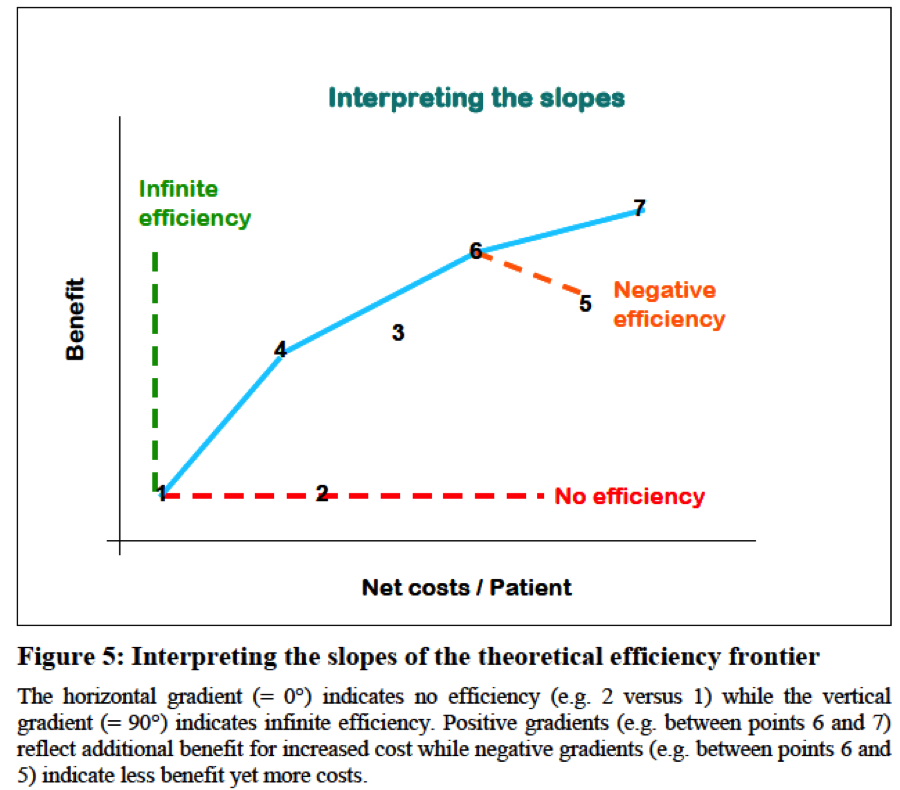Which treatments are better than others? Ideally, medicines that provide large health benefits and cost little will be preferred to those that offer little health benefits and/or cost a lot.
In health economics, one way to systematically evaluate different treatments is the efficiency frontier. The efficiency frontier methodology is an extension of the standard approach of incremental cost-effectiveness ratios. The Instituts für Qualität und Wirtschaftlichkeit im Gesundheitswesen (IQWiG,Institute for Quality and Efficiency in Healthcare) is Germany’s agency responsible for assessing the quality and efficiency of medical treatments (e.g., pharmaceuticals, diagnostic and screening methods). The provide an overview of the efficiency frontier concept which I summarize below.
The efficiency frontier plot compares the therapeutic benefit of available interventions within a given therapeutic area on the y-axis and the net costs of these interventions on the x-axis. If a new treatment is below the frontier, it is consider not cost-effective relative to existing therapies; on the other hand, if it is above the frontier, then it is considered more cost effective than existing therapies and/or combinations of therapies.
In the example below, treatment 2 is clearly dominated by treatment 1 (same benefit, but higher cost) and treatment 5 is dominated by treatment 6 (lower benefit and higher cost). Treatment 3 is more complex. Treatment 3 has higher benefit than treatment 4, but also higher cost; on the other hand, it has lower benefit than treatment 6 but lower cost.

This brings up the concept of absolute vs. extended dominance. In the case of absolute dominance, a treatment is considered inefficient if there is at least one treatment that has higher benefits and lower cost (weakly). On the other hand, extended dominance indicates that a convex combination of therapies exists such that at least one such combination exists where benefits are higher and cost is lower (weakly). In practice, however, one typically is able to combine therapies. Thus, extended dominance is largely a theoretical construct.

Source:
- Instituts für Qualität und Wirtschaftlichkeit im Gesundheitswesen (IQWiG). Institute for Quality and Efficiency in Health Care. General Methods for the Assessment of the Relation of Benefits to Costs. Version 1.0, 19 Nov 2009.
Hi
Is it possible to update the links in this as this one doesn’t take you to the right place (http://www.ispor.org/peguidelines/source/Germany_AssessmentoftheRelationofBenefitstoCosts_En.pdf).
Thank you
You make a great point that medicines that give large health benefits and cost little are generally more liked than those that offer little health benefits and are more expensive. I can imagine that if I wanted to get a prescription for an illness, I would want to get the one that was cheaper and did more to help me get better! I think that I have heard a similar concept discussed in my economics class in high school, but it has bee so long that I might be wrong.